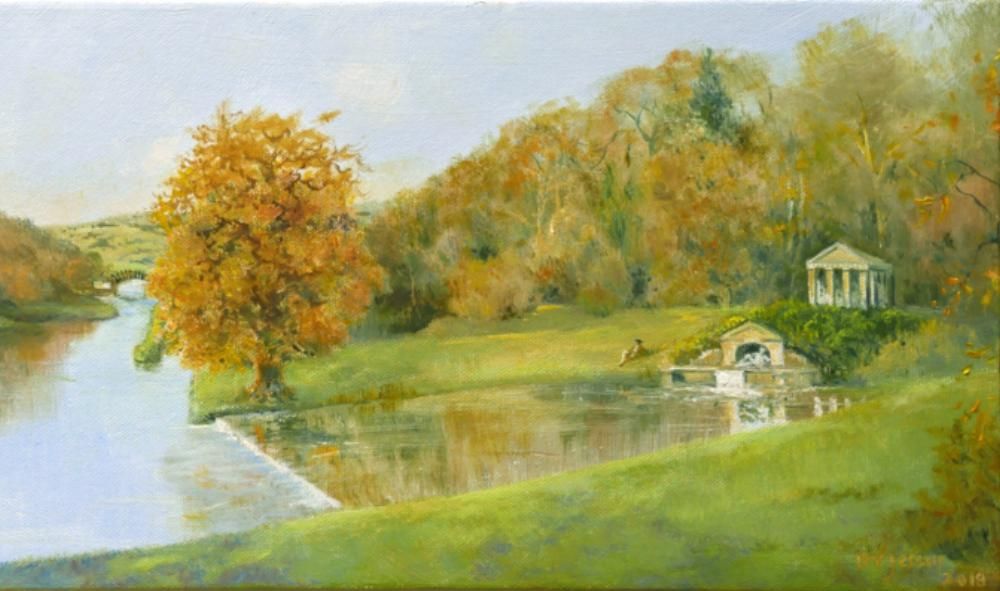
By Tim Woodbridge, author of The Choice.
Stourhead in Wiltshire is known internationally for its neoclassical gardens, 18th-Century architecture and breathtaking Great Lake. Until now, historians believed that what we see today was envisaged at the outset by a wealthy English banker as a lasting legacy for his beloved son. But a far darker, more dramatic version of events could be closer to the truth. Here, the author and Stourhead researcher Tim Woodbridge reveals the hidden secrets behind one of the National Trust’s most celebrated attractions. His book, The Choice (Dotesio Publishing), is out now.
It is generally believed that the Great Lake at Stourhead was envisaged by Henry Hoare and, perhaps, his architect right at the outset. This was based on the painstaking research of my late father, Kenneth Woodbridge, a Stourhead historian in the 1950s and ‘60s who uncovered 95 per cent of everything that is known today.
However, the one vital element that was missing from this work was what lay beneath the Great Lake – which wasn’t known until the National Trust commissioned an underwater survey in 2005.
This provided clues that Stourhead evolved with first one garden, possibly as a tribute to Henry Hoare’s late wife, and then, quite shockingly, the second garden we see today, with the Great Lake which he flooded shortly after the death of his son.
To some degree this is conjecture, built from a large number of pieces of firm evidence.
Let’s start with the accepted facts. When his wife Susan died, Hoare – one of the most eligible men in England – did not remarry. Instead, he set about building a garden, almost certainly in her memory. It was also entangled with his idea of founding a dynasty. Therefore the garden has the Trojan hero, Aeneas, as its central theme, who overcame temptation to follow his destiny to found Rome and establish a dynasty, as Hoare himself wished to do with his son.
So far so good.
At the same time, with the assistance of a prominent architect, Hoare built a temple to womanhood at the entrance to his garden, below which he dug out a canal that flowed into a lower lake quarried out of the Wiltshire rock. Above the entrance to the temple he carved a quotation from The Aeneid inciting purity. On the other side of the valley he built a cave in front of which was a pool whose waters flowed into the lower lake of the earlier garden. Inside the temple he placed a reclining goddess. The first two buildings relate to both The Aeneid and to his late wife.
Henry Hoare himself said the Grotto was his favourite place in the garden.
He seems to have excavated a shallow lake higher up the valley, crossing it via a wooden Chinese bridge. So in this first garden there were two large bodies of water, one to the south and the other to the north, both retaining medieval water levels, some 1.5 metres lower than today.
By 1752 he only had the Pantheon to build to complete his vision when, suddenly, disaster struck. His son and heir Henry Hoare III died of smallpox in Naples, aged just 22.
This knowledge of the first garden beneath the lake explains Hoare’s subsequent actions in a way that could not have been comprehended before.
The research suggests that Hoare’s new garden was now more “pain than pleasure” to him. His scheme for creating a dynasty from “the blood of his loins” lay in tatters. What he did next was extraordinary: He built an enormous dam and flooded his previous work by raising the water level by 1.5 metres. The result is the iconic Great Lake we see today, which came about quite possibly through a combination of grief and a growing self-confidence as a garden designer.
There is no way of knowing what really happened at Stourhead all those years ago. But research suggests strongly that Hoare was a man of two faces. One was his public face – that of a caring , intelligent, witty, cultured and successful man living in a perfectly proportioned Palladian villa. The other was the hidden, intensely private face of a grieving husband and father who was subject to uncontrollable forces of love and loss that he expressed through the epic melancholy and destruction of his garden.
If this hypothesis is correct and Hoare did deliberately flood his garden, it was unbelievably bold and an act of genius. What he created from grief was more than a triumph. It was a glory as if, as Handel said of the Messiah, ‘It came from God”.
The Choice by Tim Woodbridge is out now, priced £8.99 in paperback and £7.99 as a Kindle eBook. It is available on Amazon UK or via www.stourheadthechoice.co.uk